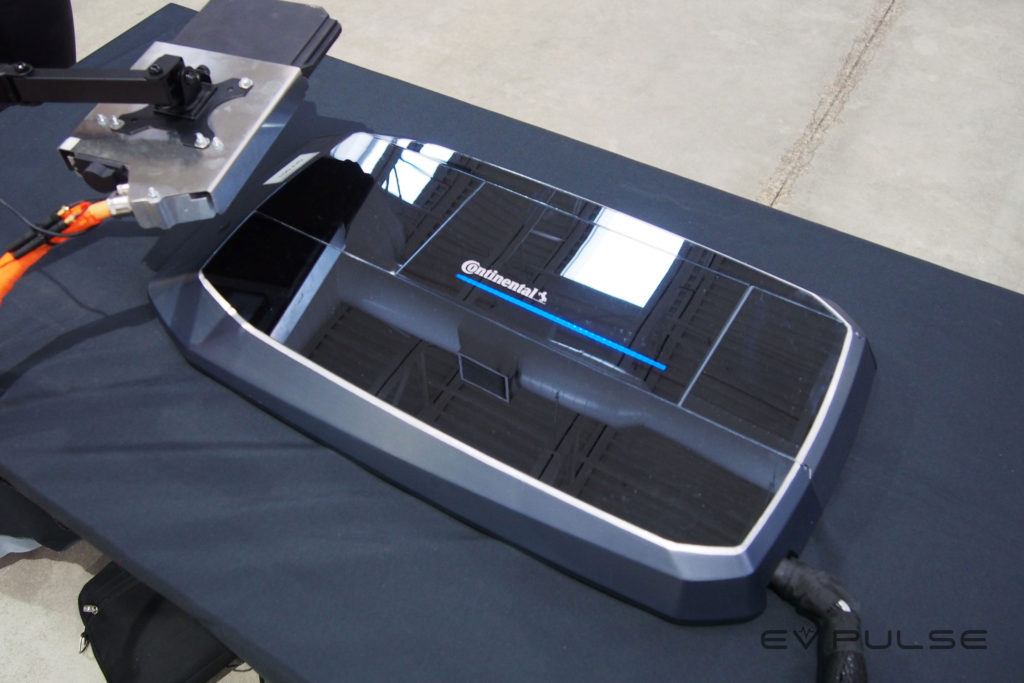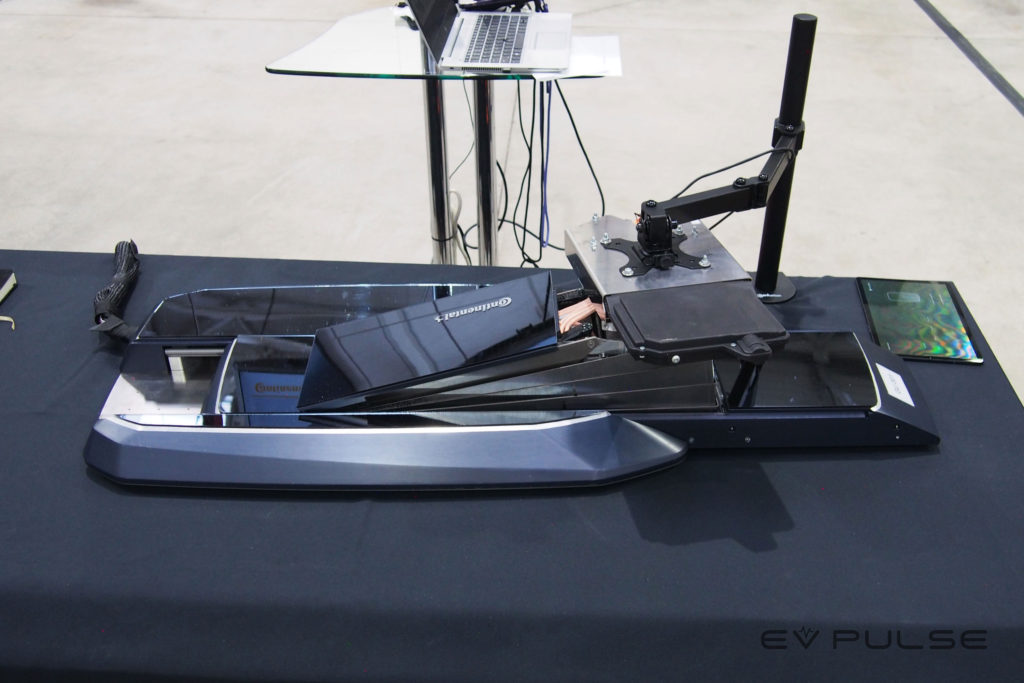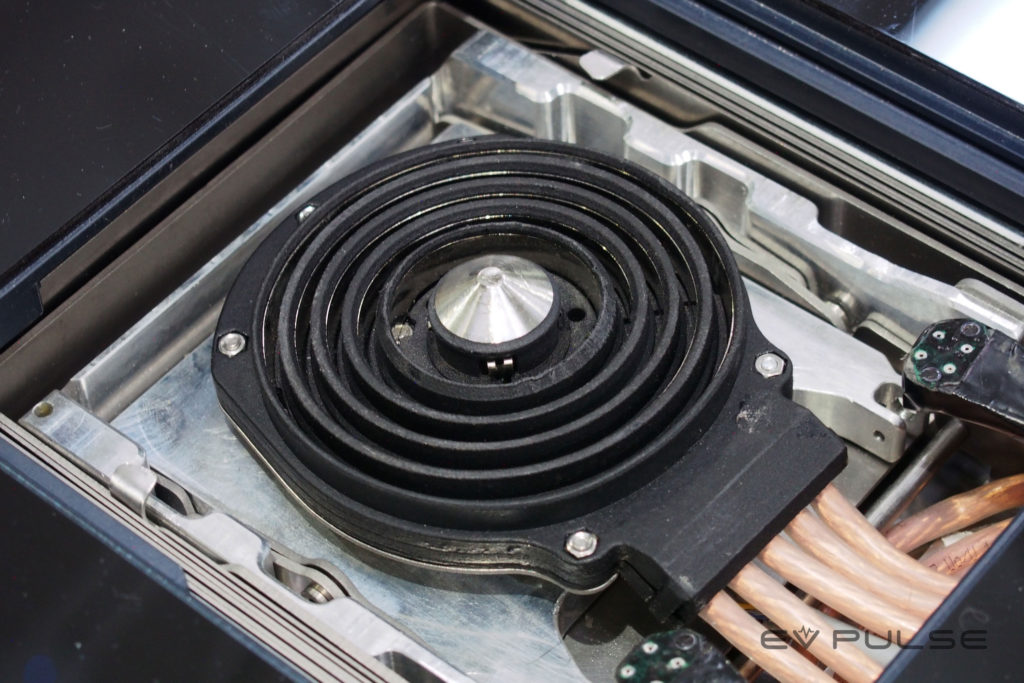While still far from perfect, electric vehicles offer a range of important advantages compared to combustion-powered cars and trucks. One nice feature is that in everyday use there’s no gas tank to fill because you can juice up right at home. Making this even easier, supplier company Continental is developing a system that automatically charges your vehicle, so there’s no risk of forgetting to plug in.
SEE ALSO: Wireless charging is an electric vehicle gamechanger
Failing to juice up your EV is a serious concern for motorists. If you have a long drive planned and you neglect to charge beforehand, you may not have enough range to reach your destination, let alone make it home again. Of course, you can rely on public charging, but this isn’t always an option, and even when it is available, public networks are often cantankerous.

Helping you avoid these headaches, Continental’s automated charging solution does nearly all the work for you. This tech consists of a weathertight box that mounts to the floor of your garage, carport, or even outside on the driveway. When it’s time to charge, you simply park overtop the box and if you’re within range, a robotic arm pops up and makes physical contact with a charging plate that’s integrated into the bottom of your EV. After that, power gets sent into the battery pack with no extra steps required.
Of course, that ground box has been engineered to take a beating. “It’s designed to be robust enough that if you need a few attempts to park in the right spot, you drive over it, nothing is going to happen,” said Alia Hall, segment head of driveline and electrification at Continental Engineering Services. Ruggedness is important because you just know careless people are going to treat these units like speed bumps.
MORE EV TECH: High-tech drum brakes could improve EV efficiency. Yes, drum brakes
For this system to properly make contact, drivers need to position their vehicle correctly. A visual guide can be integrated into vehicle infotainment systems to ensure users park in the right spot. Of course, this doesn’t need to be spot-on perfect because the robotic arm is able to make fine adjustments left, right, forward and back.
Unlike wireless vehicle charging solutions from competing companies, Continental’s system makes physical contact with the vehicle. The robotic arm features a hockey puck-like pad with embedded metallic contacts. When raised, these touch corresponding points on the vehicle, which allows the transfer of power to the battery.

As for the technology involved in all this, Hall said, “It uses conductive charging as opposed to inductive charging because that allows you to have all the same benefits from being able to just conventionally plug into a wall box.” The system supports AC charging (what you’d do at home) at up to 22 kilowatts, which is an extremely impressive speed, though Hall noted, “[We’re] also looking at a 50-kW DC version.” Amazingly, she said the system can handle 350 kW if desired; the size and design of the charging plates just needs to be modified.
Automated vehicle charging is mostly about convenience, never having to wrestle with a soiled charging cord again. “You can picture the scene,” said Neil Cheeseman, global head of business development for drivelines and electrification at Continental. “It’s dirty jeans, it’s dirty hands, dirty clothes, arms full of groceries, laptops and things. It’s just something extra you don’t need to do. Forget about it.” But this technology offers other benefits as well. According to Continental, conductive charging is more efficient than wireless charging, though the difference may be quite small. “Efficiency is ultimately CO2 wasted, being pushed into the atmosphere. So, we’re trying to make this as efficient as possible,” said Cheeseman.

Beyond convenience, efficiency improvements and the ability to support DC fast charging, this design could also be a lifesaver for drivers with physical challenges. “[Maybe] they’re wheelchair-bound, able to drive a car but not necessarily able to then maneuver around their vehicle to plug their vehicle in,” said Hall. “So basically, this is a solution.”
CHECK THIS OUT: Continental’s Electric Corner Module improves EV efficiency, serviceability and even maneuverability
Continental’s Automated Charging technology is not available right now, but Hall said it’s expected to hit the market around the middle of 2025. “So, initially the plan is to sell this to automakers because they can integrate this into the vehicle and sell the ground unit along with the vehicle, but then hopefully in the future we’ll be able to do a retrofit version as well that third parties would be able to retrofit into EVs,” she added. This technology promises to make life with EVs even more streamlined, and who knows, with DC fast charging capability perhaps even public charges can be automated in the coming years.

